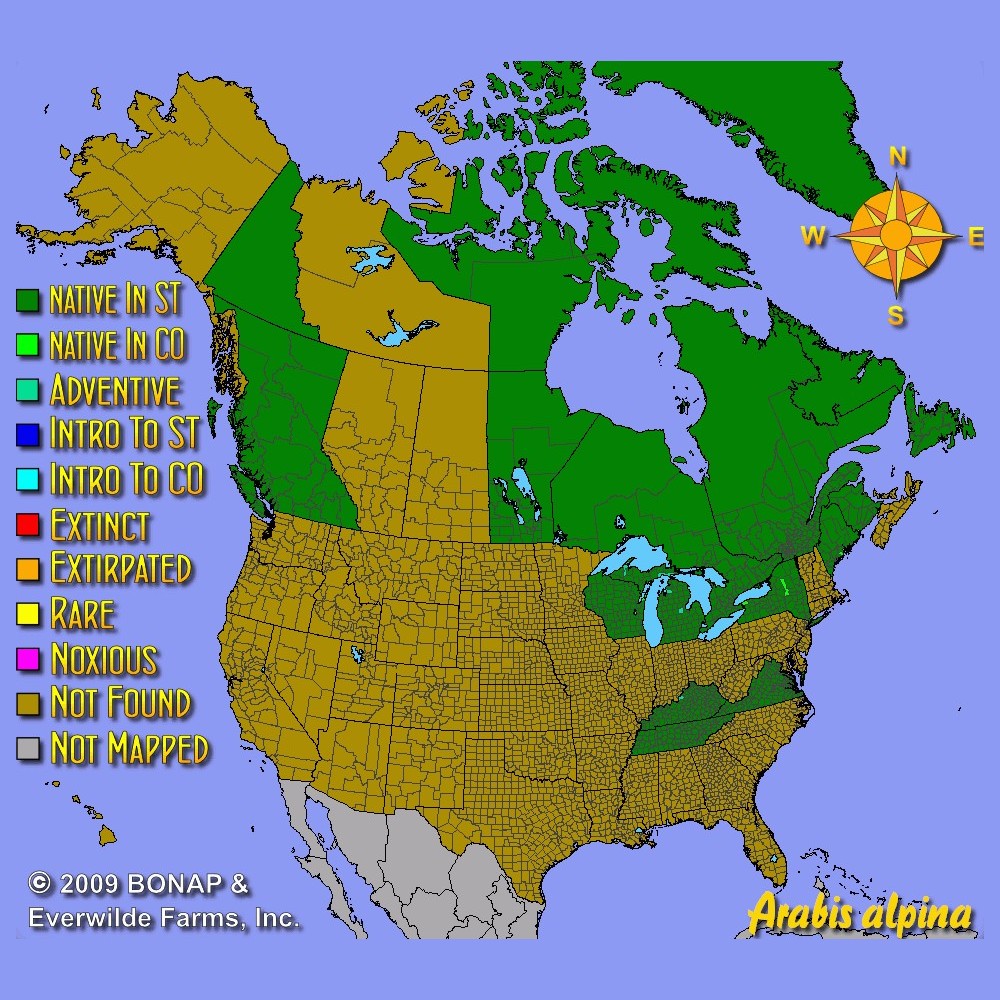Rockcress Seeds
- HOW TO GROW
- FAST FACTS
- REVIEWS
HOW TO GROW
Sowing: Since this white rockcress plant does not tolerate being transplanted, direct sowing is the best method. In late fall or early spring, sow the Arabis Alpina seed just below the surface in full sun or partial shade. Germination should take place within 14-21 days at 60-70 degrees F.
Growing: This plant grows in almost any soil, and does especially well in dry or poor soil. Good drainage is essential. It does not need watering unless drought conditions persist. Though it tolerates some drought, high heat and humidity will have a damaging effect on this plant. Since it spreads easily but does not become invasive, it makes an attractive native groundcover; it also grows well in rock gardens. After flowering, cut the stems back for attractive new growth. After two or three years of growing, divide the plant. The white rockcress plant attracts butterflies and bees, and resists deer.
Harvesting: For cut flowers, cut stems as soon as the blossoms open.
Seed Saving: After the flowers fade, the seed pods will form; they are long and thin, with many seeds in each pod. Remove them individually when they begin to turn brown, and spread them out to dry away from direct sunlight. Thresh them to separate the white rockcress seed from the pods. Store the Arabis Alpina seed in a cool, dry place.
FAST FACTS
Common Names: Alpine rockcress
Latin Name: Arabis alpina
Species Origin: US Native Wildflower
Type: Native Wildflowers
Life Cycle: Perennial
USDA Zones: 1, 2, 3, 4, 5, 6, 7
US Regions: California, Mountain, Arid/Desert, Plains/Texas, Midwest, Northern, Northeast, Southeast
Seeds per Ounce: 95,000
Stratification: No Stratification
Germination Ease: No Stratification
Sunlight: Full Sun, Part Sun
Height: 6 Inches
Color: White
Bloom Season: Blooms Late Spring, Blooms Early Summer
Healthy seedlings!
Since this seed does not need stratification, I chose it as a quick fix for an area that needed ground cover. I sowed it directly on the ground last spring. It's fall now, and I have a patch of beautiful, healthy plants, with lovely foliage. I hope to see them bloom when they return next spring.
Lovely White Blooms
These are experimental for me, but I look forward to the Spring, 2021 challenge.
DESCRIPTION

HOW TO GROW
Sowing: Since this white rockcress plant does not tolerate being transplanted, direct sowing is the best method. In late fall or early spring, sow the Arabis Alpina seed just below the surface in full sun or partial shade. Germination should take place within 14-21 days at 60-70 degrees F.
Growing: This plant grows in almost any soil, and does especially well in dry or poor soil. Good drainage is essential. It does not need watering unless drought conditions persist. Though it tolerates some drought, high heat and humidity will have a damaging effect on this plant. Since it spreads easily but does not become invasive, it makes an attractive native groundcover; it also grows well in rock gardens. After flowering, cut the stems back for attractive new growth. After two or three years of growing, divide the plant. The white rockcress plant attracts butterflies and bees, and resists deer.
Harvesting: For cut flowers, cut stems as soon as the blossoms open.
Seed Saving: After the flowers fade, the seed pods will form; they are long and thin, with many seeds in each pod. Remove them individually when they begin to turn brown, and spread them out to dry away from direct sunlight. Thresh them to separate the white rockcress seed from the pods. Store the Arabis Alpina seed in a cool, dry place.
FAST FACTS
Common Names: Alpine rockcress
Latin Name: Arabis alpina
Species Origin: US Native Wildflower
Type: Native Wildflowers
Life Cycle: Perennial
USDA Zones: 1, 2, 3, 4, 5, 6, 7
US Regions: California, Mountain, Arid/Desert, Plains/Texas, Midwest, Northern, Northeast, Southeast
Seeds per Ounce: 95,000
Stratification: No Stratification
Germination Ease: No Stratification
Sunlight: Full Sun, Part Sun
Height: 6 Inches
Color: White
Bloom Season: Blooms Late Spring, Blooms Early Summer
Reviews
Review
Healthy seedlings!
Since this seed does not need stratification, I chose it as a quick fix for an area that needed ground cover. I sowed it directly on the ground last spring. It's fall now, and I have a patch of beautiful, healthy plants, with lovely foliage. I hope to see them bloom when they return next spring.
Review
Lovely White Blooms
These are experimental for me, but I look forward to the Spring, 2021 challenge.






